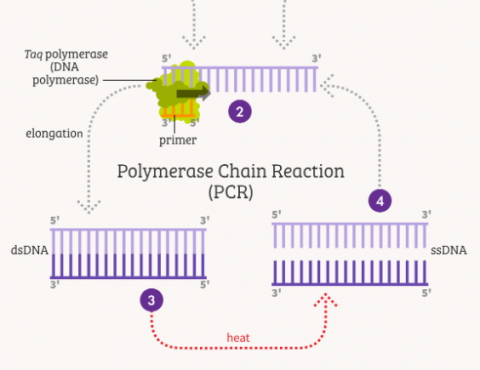
Biomolecular sciences are concerned with the genesis, morphology, and structure of organisms at the smallest possible scales. They are truly interdisciplinary fields of research, encompassing various processes from genetic interactions to protein expressions. This fascinating and diverse world of study is tied fundamentally to a single revolutionary technique: polymerase chain reaction (PCR).
At Omega Filters, we supply precision optical solutions that empower researchers in demanding biomolecular workflows. Such solutions include a range of best-in-class PCR filters designed to be compatible with all common fluorophores used in molecular cloning.
Fluorescence filters are central to the DNA amplification process. Our PCR filters excel when analyzing genetic material, but before we get into that, let’s briefly outline the basic principles of PCR.
What is PCR?
PCR is a DNA amplification method used to multiply low levels of genetic material from various sample types. The ultimate goal is to replicate a target sequence over and over again. This is clearly valuable to molecular scientists handling scarce genetic material, such as biological matter from a crime scene.
The first step in any PCR experiment is the isolation of single-stranded DNA via denaturation by heat, where you take a double-stranded deoxyribonucleic acid (dsDNA) and heat it to temperatures in the region of 90°C. This causes hydrogen bonds linking the strands to break down, yielding two single strands.
Next, DNA polymerase – usually T. aquaticus or TAQ-polymerase – is used to prime the target sequence for an extension. It can then be copied ad Infinitum. But how do you determine how much DNA is present in situ? Most biomolecular scientists exploit fluorescent labeling to carry out real-time quality assurance of PCR experiments. This is where our PCR filters come into play.
Using Fluorescent Probes in PCR
Fluorescence systems are used to determine reaction efficiency and provide a quantitative analysis of gene expression. This is carried out using either an intercalating dye or hydrolysis probe, which generates fluorescence during PCR under certain conditions.
SYBR Green is the most common intercalating dye, so let’s use that as an example. This is a dsDNA intercalator, which means it binds into the double helix of a DNA strand, subsequently fluorescing more intensely. It is introduced to the reaction after the stable polymerase has primed the ssDNA but before the double strands are replicated. Simply put, this allows researchers to correlate brighter fluorescence signals to greater DNA yields in real-time.
PCR Filters for Real-Time DNA Amplification
Excitation and emission PCR filters are engineered for extremely high transmission over a desired wavelength band, which is prescribed by the underlying fluorophore used to probe the reaction. In the case of SYBR Green, you are looking at an excitation maximum of around 497 nanometres (nm) and an emission max’ of 520nm. As there is always some spectral overlap between fluorescent probes, it is also ideal to use PCR filters with a high optical density at the crossover to achieve high out-of-band blocking and good signal-to-noise ratios.
This is just one example of a PCR filter that can be used to help analyze genetic materials in real-time PCR, and there are countless different analytical setups for molecular cloning today. From conventional PCR to cutting-edge reverse transcriptase-polymerase chain reactions (RT-PCR), it is now possible to amplify viral RNA as well as DNA. This has proven incredibly useful to virologists studying the sequencing of Sars-CoV-2, otherwise known as COVID-19, in a bid to characterize the virus and to develop novel testing methodologies.
Our stock PCR filter set is curated for any fluorescence application using common dyes. If you would like to speak with a member of the Omega Filters team about a custom solution, or if you aren’t sure which filter set is right for you, simply contact us today.
